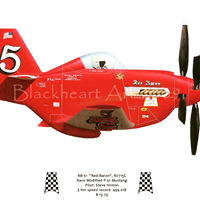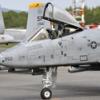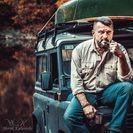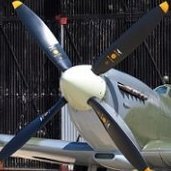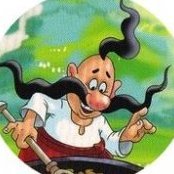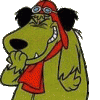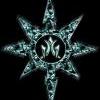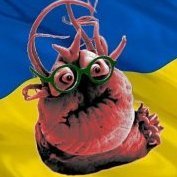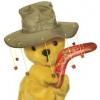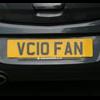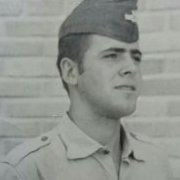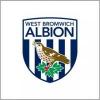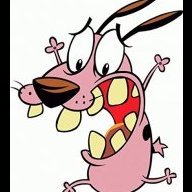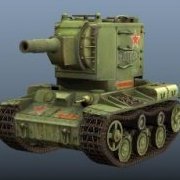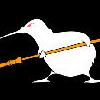Leaderboard
Popular Content
Showing content with the highest reputation on 12/08/18 in all areas
-
One morning back in the autumn of 1978 I rode my motorcycle the six miles from the village where we lived into Scarborough. I don't remember what the purpose of my visit was but I ended up in the small model shop opposite the Police station. The local shop owner had been selling model kits in Scarborough for many years and had only recently moved his shop from Bar Street, a narrow one-way street in the historic part of town to the new location on the edge of the town centre. His model stock was becoming sparse but it was the period when Airfix was in difficulties and FROG had closed down. But he was selling the new NOVO kits and I bought a few from him. But on this occasion I came away with a 1/96 scale Lindberg Handley Page Victor British jet bomber. It was in a massive box and my problem was not just how I was going to get it home on my motorbike but also how I was going to smuggle it in without my stepfather seeing it as he did not approve of me building models. My Victor came in a box like this one. The kit dated from the 1950s and was a very accurate and beautifully moulded model of a PROTOTYPE Victor. It was moulded in quality white plastic with raised panel line detail and it included four jet engines in the wings which you could view by opening large hinged panels above the wing roots. This was another version of the kit that included some sort of remote control device. You can see one of the large engine access openings on the wing parts. It was later issued by Revell. The fuselage halves as they come in the kit. They represent a prototype aircraft with the shorter forward fuselage and the taller tail fin and rudder. I originally built this model very quickly straight from the box when my stepfather was not looking and was quite happy with it for a few years, but it did languish hidden away in a box on the farm while I went through a few poor career choices and change of addresses. A few years later when I was settled I reworked the model to turn it into a production B.1. This involved sawing off the nose at the leading edge of the wing roots and adding an equivalent six feet section to extend the nose. I removed a section of the tailfin to reduce it in height and added curved walls to the jet intakes as well as airbrake strakes and other small details. I painted it with Halfords Appliance White car spray. Decals came from my spares except for the tail serials which are Letraset and the XV Squadron badge which I hand painted. The model represents a Victor B.1 V-Bomber of 15 Squadron based at RAF Cottesmore around 1960. I shortened the undercarriage legs. I made the undercarriage detachable so that it can be displayed in flying mode on a home-made stand. That has been my 1950s 1/96 scale Lindberg model of the Handley Page Victor British Jet Bomber. Hope you liked it. cheers, adey29 points
-
Here is the second of my two builds of the new Tamya 1/72 Ki-61 Tony; this one was a very generous gift from my friend @Cookenbacher and represents an aircraft flown by Captain Kobayashi of the 244th Air Group based at Chōfu Airbase near Tokyo in Febuary 1945. This aircraft has a 'scoreboard' painted beneath the port cockpit side apparently showing 5 x B-29 kills plus a sixth by ramming. The 'Tony' is quite a small and delicate-looking aircraft and compared to a B-29... well that must have been an interesting combat and I should very much like to read what happened if anyone has any further information. Anyway here she is: The kit is as you would probably expect a very easy build with most of the parts clicking into place without a hint of drama. The the small variations between the schemes provided are catered for and called out with optional r/t mast, venturi tube and wingtip lights. Build thread is here I used the kit transfers which included the yellow leading edge stripes (both for the wings themselves and the undercarriage doors) - the propeller warning strips were also provided as decals but I just painted them myself. The transfers were fractionally thicker than I would have liked but as a result were at least strong enough to handle some manipulation where required and they settled down okay with some Microset - again, the only one I had a real problem with was the red fuselage band, I had the same issue with the white fuselage band with the other kit I built. The aircraft was painted in Vallejo Metal Color Duralumin (a few panels were picked out in Dark Aluminium for variation) with some Citadel Runefang Steel cut about 50% with their Celestra Grey on the fabric-covered ailerons and elevators, the interior and wheel-wells were painted in Colourcoats ACJ04 Interior Buff Green. Final touches were done with Tamiya clear red and blue and their Burnt Iron for the exhausts, some Vallejo black/dark grey mix for the tyres, ACJ23 Propeller Brown for the prop and spinner and finally some Infini 70 Denier white lycra thread for the r/t wire. Finally I'd like to record my gratitude to Cookie for his unsolicited and unexpected gift; what a guy Cheers, Stew27 points
-
Here is the first of my two builds of the new Tamya 1/72 Ki-61 Tony; this one represents an aircraft of the 19th Air Group based in Luzon in the Philippines in 1945. This aircraft was captured apparently intact by U.S. forces, but I have no idea what happened to it after that. The kit is as you would probably expect a very easy build with most of the parts clicking into place without a hint of drama. The the small variations between the schemes provided are catered for and called out with optional r/t mast, venturi tube and wingtip lights. Build thread is here I used the kit transfers which included the yellow leading edge stripes (both for the wings themselves and the undercarriage doors) and the propeller warning strips. They were fractionally thicker than I would have liked but as a result were at least strong enough to handle some manipulation where required and they settled down okay with some Microset - the only one I had a real problem with was the twin white fuselage band which is still slightly wrinkled underneath but not really noticeable in the picture. The aircraft was painted in Vallejo Metal Color Duralumin with some Citadel Runefang Steel cut about 50% with their Celestra Grey on the fabric-covered ailerons and elevators. The uppersurface colour is the darker, greener variant of '#7 Ohryoku nana go shoku' whch is ACJ22 in the Colourcoats range and the interior and wheel-wells were painted in ACJ04 Interior Buff Green. Final touches were done with Tamiya clear red and blue and their Burnt Iron for the exhausts, some Vallejo black/dark grey mix for the tyres, ACJ23 Propeller Brown for the prop and spinner and finally some Infini 70 Denier white lycra thread for the r/t wire. Cheers, Stew24 points
-
19 points
-
Hi folks, Here are a few pictures of my F-84-F40 Sabre from 338 Sqn, RNoAF Ørland, in 1963. I used the Revell Canadair Sabre Mk.6 kit and added some extras, including a Martin Baker seat (from Eduard's F-8 Crusader) I also used KASL Hobby's slats and flaps together with wheels from Eduard. The very nice and thin decals are from Norwegian Vingtor. She is painted with Alclad2 and Gunze, and weathered with Ammo of Mig products. It was just a pleasant build all the way 🙂 Thank's for looking, I hope you liked it 🙂 Cheers! //Fred19 points
-
Hi all and my latest finish, a Monogram 1/72 F-105G Wild Weasel built for a Vietnam GB elsewhere. The build thread is here if you're interested but to recap: Kit: Monogram 1/72 F-105G Build: Out of the box Paints: Halfords primer from a can. Revell Acrylics with a paint brush. Future, Flory Models Wash, W&N Matt Varnish Decals: Mix of kit and Superscale Sheet. Markings: 561st Tactical Fighter Squadron, 388th Tactical Fighter Wing, Southeast Asia 1972. This aircraft (S/N 63-8320) scored 3 Mig kills in Vietnam. I don't know if the aircraft carried kill markings but I added two under the cockpit. As a footnote, the last F-105 shot down in the Vietnam War was from the 561st and the squadron was the last to fly the F-4 Pantom II on ops. Anyway, some pics! Monogram F105G Wild Weasel_1 by Dermot Moriarty, on Flickr Monogram F105G Wild Weasel_3 by Dermot Moriarty, on Flickr Monogram F105G Wild Weasel_4 by Dermot Moriarty, on Flickr Monogram F105G Wild Weasel_7 by Dermot Moriarty, on Flickr Paints used... Monogram F105G Wild Weasel_8 by Dermot Moriarty, on Flickr She's a big 'un alright. Beside a Vietnam Navy Phantom (first Mig shootdown) Monogram F105G Wild Weasel_9 by Dermot Moriarty, on Flickr And that's it! For an old kit, it was a really enjoyable build and nicely engineered. I also love how the instruction sheet has call outs for what many of the pieces are e.g. 'ECM pods' or 'Drop tanks'......clearly aimed at the young builder. Maybe something Airfix or Revell might bring back?! Monogram F105G Wild Weasel_10 by Dermot Moriarty, on Flickr Thanks for looking and enjoy your modelling. Dermot18 points
-
Hi all, here some pictures of my new model, the RF-104G Starfighter by Italeri in 1:32. Add some Eduard PE parts Brassin exhaust, MB Mk.7 seat und tyres as well as a pitot by Master. Nice kit with a great decalsheet!18 points
-
Hi gentlemen, this is one of my older models - Azur's 1/72 scale Heinkel He 60, finished in the markings of Legion Condor's AS/88.18 points
-
Here's my own interpretation of an early mark spitfire, notionally a mk1 and notionally 1/32 scale hand carved from basswood, walnut and oak and varnish finished. I did it as an experiment to give me something to do in my spare time, and to see if I could make something I'd be happy to put on display. There is rather a lot of artistic license being used e.g. I chickened out of gouging out the wheel wells or cutting control surfaces, so it is more spitfiresque than a finescale reproduction, however it was fun, satisfying and I'm happy with the result. Thank you all for your interest, see you for the next one.16 points
-
Having got back again into my modelling building groove, I thought I would try something a little more challenging. I picked the Pegasus 1/72 Spitfire Prototype up from a recent model expo for A$2. It looked a bit rough to start with! Lots of flash, and the decals were unusable (out of register and also seriously cracked). It wasn't too bad in the end, and I think the final result was worth it. Finished with brush painted Italeri Acrylics (the main colour being RLM 76) and replacement decals from Xtradecal sheet X72075. Build thread can be found here. Thanks for looking. Looks good on the shelf with my other 1/72 Spitfires16 points
-
This 48th scale kit is my most recent and my proudest kit. Though the icm decals discintergrated in water, i am very fond of my work and the kit. The kit overall fitted well together, the wings required a bit of sanding to get the right shape but apart from these the kit was very nice.13 points
-
The model had a couple of clear coats earlier today and tonight I mixed a thin oil wash using Abteilung 502's Starship Filth. I used this as a pinwash on the panel lines and left it to dry a little before wiping the excess away with cotton buds. I think that I am going to leave it at that because wiping off the residue has left it looking grimy enough not to need anything else, it just needs some time to dry off now before I add a final clear coat - and that should be job done. by John L, on Flickr by John L, on Flickr by John L, on Flickr13 points
-
Hi, Recently finished my RCAF Canadair Sabre from 427 Sqdn. I used the Academy F-86F-30 kit OOB except for the Aires seat and True Details wheels. The Leading Edge decals turns it into a Hard Wing F-86-30 style from Zweibrücken, Germany in 1957. The tail markings is from the Weapons Meet Cazaux, France. Unfortunately the decals had a tendency of silvering. Painted with Mr.Paint and weathered with Ammo of Mig products. Thanks for looking 🙂 //Fred12 points
-
12 points
-
Boeing 727-200. 1:144 Airfix kit. 26Decals Iberia 'Delivery scheme' sheet. This is the venerable old Airfix kit that originally appeared as a 727-100 in the late 1960's, and the mould was modified in the early 80's to make it into the stretched -200 version. It's a bit clunky by today's standards, but can be made into an acceptable model. Some mods I made were; Cut out the cockpit area and replaced it with a Daco clear cockpit section. It makes a big difference and is well worth doing. Scratch built a basic cockpit, seats & instrument panel. Reshaped the nose, as the kit has it a bit blunt. Cut the wing fence off the trailing edge, and made new ones on the leading edge. Scribed the wings. Scraped and sanded the hard line that runs back over the fin from the top of the engine intake. Removed it and blended the area smoother. 10 minute job, but again, it makes a noticeble difference. Replaced the wheel with a set of Brengun resin ones. Paint is Halfords appliance white, Alclad, and Tamiya acrylics, all sprayed. Hope you like it! 'With something else' could only be the Iberia DC-9, also an Airfix kit with 26Decals. Some WIP photos. The cockpit area cut away: Daco glazing trial fitted Cockpit painted up, Milliput on the nose to help with reshaping. overall view. Note the 'hard line' running onto the fin from the centre engine top has not yet been scraped & sanded away. Thanks for looking, John11 points
-
Here is the final images of my effort to make a kind of a what-if. What if an old F4U Corsair was found and flown home... You can read all about the background in the build log Thank you all for watching!10 points
-
Well its been a while to say the least ! Hello again everyone. After recently sorting my stash out i found a new tool Revell hunter that was in two sections . This is what became of the hunter .The kit itself is O.O.B with and added aeroclub white metal seat. The engine half was salvaged from the spares box . Everything else i have made from scratch . DSCN2667[1] by steven perriss, on Flickr DSCN2668[1] by steven perriss, on Flickr DSCN2674[1] by steven perriss, on Flickr C&C welcome Steve9 points
-
Not a new build or finisher but one I did some years ago Magna kit. I built this as a review sample for SAMI. Some of you my have or recall it. Any wayI repaired this a short while ago and while I was having a clear out today I took these pics to fill in time. Enjoy... I was thinking about giving it a repaint in to the sand / brown scheme some time. I think I still have the instructions and diagrams for it somewhere.9 points
-
You are far too kind as always Terry. That's Dorset folk for you.... 😁 There's a temptation to try and rush - at least there is for me - at this stage, which means I'm having to deliberately force myself to take it slowly and avoid any mistakes. With gloss paint and metals involved any mistake would be a big and highly visible one.... Most appreciative of those kind comments Crisp. I have to say that I feel under no pressure whatsoever.... You really do say the nicest things you old sweetie. Thank-you. I tried in vain to find a smartypants response à la Souixsie: this is the closest I could find without seeming too laboured.... It remains an eternal sorrow that I never got to see them live - I can't for the life of me understand why I never did! It's a gamble Bill: I'm optimistic in a cautious kind of partly doubtful way... Glad you've settled on a brush Ultraman! I wish you the joy of a new painting experience!! Thanks Ced! One thing I neglected to mention is that I paint nowadays with the airbrush stripped back, viz. the needle cap off at the front and losing the handle up at the rear that covers the needle chuck. It's much lighter now and practically fits into the fist in a way that gives greater control and freedom of movement. As long as I remember to put the lid on the paint cup of course... 😅 Much obliged for that Roger. I sometimes think that Tom Keating should be mandatory viewing for modellers, regarding the sheer variety of ways that one can think about the application of colour: Ta Giorgio! 😁 I'd hoped to be a bit further on with paint this afternoon to be honest but getting yesterday's surfaces prepared and masked for the next stage ate up all the available time. A goodly portion of time went on Micromeshing (6000 grade) all around the unmasked portions of the aircraft, finishing it off with a polish using a cloth disk in the Dremel: I don't know how obvious it might be in the photo above but as well as emphasizing the differing matt and gloss paint surfaces, I also used the polishing head to vary the amount of shine in selected regions - again without knowing how this will perform under a metal coat but curious to see: Such things may well disappear but at least I'll know.... That took a couple of hours, then using scrap masking film and strips of tape, I started marking out the black areas top and bottom of the booms that need to be masked prior to the metal going on: It's basically a barrel shape with an arrowhead at one end on a compound curve, so needs some concentration to make sure that angled lines remain linear when viewed from the side. When cutting a test blank I realized that matters become more complicated by a couple of breaks in the mask caused by the wing walkways passing through them: Using tape to establish the lines in their correct separation with regard to the lettering on the wings and markings on the roof of the fuselage (in reference to photos showing these alignments) took more time than it should have (I think tbh I'm starting to feel fatigued and slowing down mentally a bit), but in the end I had working designs cut out and applied: When you have a break in masks like that - especially when trying to keep linear bits linear on a curved surface during application - I've found it necessary to maintain a continuous perimeter around the mask like so: In this way you can lift both the mask and the strips cutting across them as one whole in order to maintain a correct alignment and spacing during application. Afterwards you can simply take those strips out and you're left with the mask elements correctly positioned in relation to each other on each wing: I nearly had palpitations when I saw the tape that I'd been using to lay out the walkways had done this on lifting it off: ...until I realized it was just the gloss lifting from the masking film and not the aircraft. The undersides took much longer to do as they involved a lot of complex curvature work by hand to mask off around the curve of the wing's leading edge where it intersects with the curve of the boom. This took much concentration and proved quite tiring, hence a single photo at the end: I've still the nose and tail numbers to add but I think I've used-up my energy reserves on that for the day. Mrs. B is away into town later so I promised my youngest that we'd set up the Vive I borrowed from work in the front room for the afternoon. Don't be surprised to learn I ended up with War Thunder-induced motion sickness in the next post.... Tony9 points
-
8 points
-
After MOTD there was a bit more progress - I added some black grit into the lowest dips... and then some of that very tiny - but unusually heavy - brown earthy dust... it's looking more 'ramplike' but it needs to dry and harden before I dare adding any shading with a wash. As warm as it is the central heating is on 'full belt' in the office - but I must be patient. In the meantime I'm stripped to the waist - don't worry - no pictures I bet you had forgot about these guys... I am going to start a bit of painting on them - starting with their black boots. I have until 4pm to make a bit of progress - then it's MAN CITY at ARSENAL - C'mon City8 points
-
Reissue of BT-K the first Airfix Spitfire kit in 1/72 scale. Built out of the box with minimum tools and unpainted. This caused me a few problems with the finish as you can see a couple of light patches on the model which are areas i have probably not sanded polished enough before the application of floor polish. The transfers went on great though!! This is actually the late 70's tooling of the Spitfire and not the original 1953 kit. Issued with the 1/48 F-22 Spitfire to celebrate the 50th Anniversary of the Spitfire. Cheers Greg8 points
-
Oh FINE. I put the uppersurface decals on, all four of 'em. 2018-08-11_10-43-15 by Edward IX, on Flickr Soviet aircraft in WWII didn't have upper wing markings, which was a poor choice on their part, because they look cool as hell, so it's just a tailfin red star and two fuselage red stars, one of which incorporates the patriotic slogan. Just the underside red stars to do and then that's it for decals; the kit includes no stencils, so I couldn't add 'em even if I wanted to.8 points
-
Hello, I'd like to share this model recently re-released by Airfix in new striking colors. It was built OOB for my 8 years old nephew in 4 full days. He has patiently followed the whole process taking active part in it. The only addictions were the little antennae above each tail boom. I'm a fan of Airfix whose new kits are nice and sweet and really cheap! A joy to build! Hope You enjoy it! Giovanni (uncle) and Francesco (nephew)7 points
-
She's finally done! It took only 11 monthsIt's the ancient Academy kit, which I still believe is far more accurate in terms of the overall shape than the modern HobbyBoss one. Aftermarket goodies: Verlinden cockpit (modified according the F version) and AN/ALQ-131 Paragon flaps & slats FlightPath Pave Tack Master pitot tube Eduard GBU's, some of the photoetched details NorthStar wheels Afterburner decals Made of scratch: gear bays, bomb bay, doors, wheel legs, nozzles, Pave Tack cradle, blah blah... Cheers from Czech rep. Andrew F-111F Miss Liberty II, No.70-2390, 48th TFW flagship, Col Tom Lennon7 points
-
This is the old but good (for its time, at least) ESCI/ERTL kit from 1983. The solid molded plastic tracks on ESCI’s little Patton look nice, but the road wheels and return rollers are depicted as wide single units rather than as the thinner, paired wheels as they actually were... Making those one-piece Mag wheels into the correct paired sets is actually a simple (if tedious) procedure: I started by taking two of the kit bogies and sanding the backs down half way. Then, adding a .030 inch thick plastic disc as a spacer between them, I glued them together. The width comes out exactly the same as the original single wheel but with a space between the two for the track guide horns. This approach requires twice as many bogey wheels as come with the kit, but fortunately I also had a M48A5 kit to plunder for parts... to make fourteen pairs – and a further ten return rollers needing the same treatment too! As for the tracks, the molded parts in the kit aren’t bad, but the inner sides have unrealistic gaps between links and are completely lacking in detail. My first thought was to simply replace them with better detailed tracks from a spare Hasegawa 1/72 M1 Abrams kit, which has very similar sections and guide horns... ...but unfortunately, the pads on the outer surfaces are of a different design. I experimented with various fixes, such as sanding away the Abrams pads and then shaving off the individual M48-style chevron pads and attaching them one by one – but that approach have been unreasonably burdensome for a whole vehicle. I finally opted to sand the outer surfaces of the Hasegawa Abrams tracks down until the remaining inner faces were almost paper thin, and then attaching them to the flat ESCI parts. A bit of work, but the upgraded parts do look a whole lot more like proper Patton T97E2 tracks! So here’s my rendition of ESCI’s M48A3 Patton in 1/72 scale. This classic kit from the early 1980s has a lot going for it, but I did make a few changes: • 14 road wheels and 10 return rollers corrected to doubled configuration • track horn guide channels added to the centers of the drive sprockets • mounted tracks and spares on turret improved with Hasegawa M1 Abrams track inside surfaces • headlight guards made from lead foil, headlights hollowed out and acetate lenses added • tool boxes on fenders improved with new plastic lids, hinges, & wire handles • air cleaners on fenders improved with wire and sheet plastic details • Xenon light improved with wire, facial tissue cover, and hand painted MAIN DEALERS logo • wire securing ring and lead foil clips added to blast bag at base of barrel • .50 cal machine gun replaced with a Hasegawa part improved with wire and plastic stock • various handles, lifting rings, antennae, MG barrel deflector, and hatch mechanism made from wire • raised casting codes on turret top are numbers shaved from plastic model sprue labels • turret basket scratchbuilt from plastic, wire, and nylon mesh; stowage from various sources • markings hand painted and assembled from model railroad stencil decals The completed tank: The model depicts DISASTER, a M48A3 (late model) Patton of the MAIN DEALERS, 2nd Platoon, ‘C’ Company, 1st Marine Tank Battalion during operations Southeast of Da Nang in February of 1970.7 points
-
Tiny Gooney Birds! The American bird represents a C-47 of 317 Troop Carrier Group (TCG), 55 Troop Carrier Squadron (TCS) Mindoro, 1944. The Japanese plane is an L2D2 type Zero transport (“Tabby”) of the Yokosuka Naval Flying Group, 1945. Both models are 1/200 scale.7 points
-
Thanks John, Bill, Simon and Ben Thanks Hendie, nice a idea and... Thanks Chris, I think I'll go got this look, as did Hendie With a view to doing that I sawed the windows: Sadly the mis-shaped bit is still there... I think I'll have to do 'a Baron' and find some packaging. Of course I then realised that the canopy, not matter how it was assembled, would be useless for masking so I'll have to do something about that. Time to stop messing about and get this together as it's close enough: I've been at a neighbours this afternoon for a wake so perhaps I'd better wait until the morning. Thanks guys.7 points
-
I know it's a different service, but I still use the RAF mug my granddad used in WWII almost every day. Notice the chip in the rim. It survived Hitler, but it didn't stand a chance with Mrs Gorby.7 points
-
Full Refund The cockpit / fuselage sidewalls of an Avro 504K toward the front of the cockpit are nowhere near the flat upright slabs that a lazy modeller like myself would like to see. Section 'B' (below) shows the issue, with the heavy red lines indicating the shape I'm discussing. At the rear of the cockpit (section 'C' below), the shape has morphed smoothly into a simpler more upright shape (also shown by red lines). This changing camber running along the length of the fuselage must be modelled as it makes for an important visual characteristic of the airframe. It's all part of the issue of translating the circular engine cowling into a square cross-section fuselage. So now I have to model the damned thing. Get that block of NZ white pine where the cockpit must go and stick two lengths of appropriate width basswood onto its sides. Leaving this effect. Now this is an unusual sight - me using a wood plane! I never was any good with these things and generally try to avoid them but on this occasion I managed to just slightly thin down both strips of wood on either side of the cockpit. Leaving this, onto which I have drawn the sloping camber that I need to start building cross-section 'B' as shown above. Phew - back to a chisel. Much easier to control. Cross-section 'B'... Cross-Section 'C'... and an overview. Note how I have managed to get the upright surface on the new block of wood to gradually 'roll' into an upright position toward the rear of the fuselage. I've also managed to get it to thin out quite nicely too. I'm pretty happy with that. Now here's a small detail that might cause some controversy because I've based it on photos not on the 'official' sections shown above. On numerous photos of Avro 504K's there appears to be a very subtle ridge running along the fuselage wall above and parallel to the main panel that I have just been modelling. This little ridge seems to fade away by the time it gets to the rear cockpit. On the diagram below I have interpreted this ridge to be represented by the fine horizontal line that I have highlighted in hazy red - the one that's at the end of the red arrow. I have done this despite some misgivings, as the little red line could also be interpreted as a throttle linkage within the cockpit. In any case, I think that there needs to be a small ridge modelled here as it is quite clearly visible in several photos. So here it is. A small ridge in the making. And now we mix up some automotive filler. If you have not got any of this get some, it's fantastic stuff! Gloop it onto the structure. Yep - gloop it on - that's right. Smooth it out with popsicle sticks and fingers. Let it dry and sand it down. If it's not quite smooth enough or shaped right or whatever just scour it with a scalpel blade... and smear some PPP all over it. Just like this. After a bit of smoothing and sanding an so-forth we have this... Which is nothing more than a buck for yet more vac-forming! Yes - vac-forming! After all of that this whole assembly is nothing more than a block against which some plastic is going to be molded. Now I know, I know... At the start of this thread I said that this was going was going to be a wooden model - and I note that Redshift is already taking me to task over my lack of 'purity' in this regard (have a look at his recently completed spitfire and you'll see why he sees me as a sell-out). But I never said it would be 100% wood and about half way through my Mig15 build I did say I was going to be more experimental with methods and materials in future. So yes this one's becoming more and more a 'multi-media' project. If you want you can go to the front counter and ask for a full refund. Our staff will gladly refund you the full price of admission to this thread. 😝😛 Bandsaw Steve, Multimedia Modeller7 points
-
I was up early this morning - expecting the re-run of MOTD at 7.30am on BBC1 - but the beggars have changed things and it isn't on until 9am - so I got the airbrush out and sprayed some dark earth on the ramps - now the PPP has properly dried. I think it's safe to say that I will need to add some 'scenic cement' and scatter on a few 'sprinkles' of grit to mimic the rest of the base and then another dark earth coat - followed by one or more of these - for 'blending'... I am undecided which colour or colours to try though - I will probably start with the dark dirt - then if it is too light I'll add a bit of black - but if it is too dark I'll add some sand perhaps. If it looks OK I'll maybe just add some grime instead - for variation. DECISIONS DECISIONS....7 points
-
7 points
-
Well its actually HobbyBoss plastic, rebooted by Eduard with some resin goodies and PE thrown in plus a Furball decal sheet Build is here WIP. Its a bit of an ongoing thread as Im doing a double build. This one was done for a friend who requested I build it as if it was about to launch, hence the compressed nose wheel The HobbyBoss kit has been pushed into the shade a bit by the tamiya kit, but is still worth considering as I found the fit not too bad. I would put it above the Hasegawa kit for detail and build ability Thanks for Looking Bruce6 points
-
Here's a selection of current Royal Air Force aircraft types I have photographed this Summer during the RAF's centenary year around the UK. Hercules C.4 ZH868 of 47 Sqn seen returning to RAF Brize Norton on 14 June. A lineup of 3 FTS Tutor T.1s seen at RAF College Cranwell on June 20th, including the RAF 100 display aircraft Recently delivered Grob Prefect T.1 ZM306, also assigned to 3 FTS, and seen landing at RAF Cranwell on 20 June. Another new type to the RAF, replacing the King Airs of 45 Sqn at RAFC Cranwell is the Embraer Phenom 100. ZM335 is one of 5 that the RAF has on order. Seen returning to Brize Norton on June 10th after participating in the RAF 100 flypast over the Mall, was A330 Voyager KC.2 ZZ330 of the home based 10/101 Sqns. Also at Brize on June 10th was this 24 Sqn A400M Atlas C.1 ZM414. BAe 146 CC.2 ZE700 of 32 Sqn arriving at RIAT and also wearing the RAF 100 fin decal. Airbus Jupiter HT.1 ZM500 of DHFS/60 Sqn on static display at RIAT. Typhoon FGR.4 ZK378 of II(AC) Sqn arriving at RAF Fairford for static display at RIAT. Diamond 9 of RAF Typhoons that participated in the reduced RAF 100 commemorations at RIAT. Highlight for many at RIAT 2018 was the 617 Sqn tribute featuring a newly delivered F-35 Lightning II, together with the sqn's previous mounts. the Tornado GR.4 and Avro Lancaster. First static display of the RAF Lightning II was at the Marham Families Day on July 26th, where ZM145 of 617 sqn is seen. Chinook HC.6A ZH894 of the Odiham Wing seen demonstrating at the RAF Marham Families Day. Swansong for the Tornado in RAF service and displaying for the last time at RAF Marham Families Day, was this 4 ship from 9/31 Sqns Lightning II ZM148 of 617 sqn was a star attraction in the Marham flying display. Hope these pictures are of interest. C&C always welcome. Mark6 points
-
My 3rd kit finished after returning to this relaxing hobby This was my entry in the P-47 STGB WIP Thread can be found here : Following my theme of US bases in Essex during WW2 , The 56th Fighter Group was based at RAF Boxted (4 miles from Colchester) from April 1944 through to the end of the war. This plane is Col David Schilling's P-47D-25-RA ( LM - S 226641) ,he received this aircraft in mid July 1944 . Comments and advice always welcome. ( I need to improve my photos ) And finally all 3 together, the other 2 being an Airfix P-51D (343rd FS 55th FG RAF Wormingford near Colchester) , Airfix B-26B 'Mild and Bitter' (452nd BS 322nd BG - RAF Andrews - Great Dunmow)6 points
-
I agree they do look great when they're hanging correctly, especially on the E-100 I have. I could believe they got the count wrong for the tracks though, with glue together track it could have gone quite wrong! anyway back to the build... I’ve been a bit slow with the updates on this one, but really it’s just been lots of assembling .The gun mount and all the associated bits have been a right pain to assemble. As mentioned Takom is a bit slack when it comes to using locating pins and as a result the fit can be quite sloppy! Ok the new barrels have been fitted, they look soooo much better than the kit ones (these old ones will be used on another project). It looks pretty impressive when fitted to the mount. I still need to do some painting before I can start fitting the actual guns to the mount. This horrible little basket took ages to assemble...I really do hate PE!! The basket fits on the rear of the turret to collect spent shells as they are ejected (not too sure how that actually works). The rest of the bits (well most of) were fitted to the chassis before it was given a coat of grey and some basic panel line pre-shading. She does look good with the turret fitted. Next up was more pre-shading work. The colour scheme only uses one colour so to help break it up a bit I’m doing some extra pre-shading. All the shadow areas were given a light coat of dark grey, this’ll help to darken up the green in these areas. On the upper surfaces that are more exposed to the sun I gave a light coat of yellow. I’ve found yellow works much better than plant white for this sort of pre-shading (and even with dry-brushing over green), it lightens and fades quite nicely without changing the colour too much, which is what I’m after. I’m doing the same thing with the EBR so hopefully by the end of tomorrow I’ll have most of the major painting out of the way. I may even get to start painting the tracks!6 points
-
Good evening all. With the kind permission of the administrators, I'd like to add a brief update. Today, we've finally finished the kit. Some last minute issues have delayed us with this project wich we hoped to have ready for shipment early this month. First thing first, we'd like to apologise for the unexpected delay. The kits are ready, and will be reaching you soon. We had to made a new mould for the wing parts, because the original one got ruined. The high pressure chamber produced lots of bubbles into the moulds, wich transfered to the resin parts. Needless to say, that mould was discarded....Fortunately, just that mould was damaged, and we made a new one. This is what you'll get...Please, be aware that the pics show just one external fuel tank fitted, the kit will be supplied with two of them. 20180811_193607 by Arturo Navarro, en Flickr 20180811_193819 by Arturo Navarro, en Flickr 20180811_193546 by Arturo Navarro, en Flickr 20180811_193525 by Arturo Navarro, en Flickr 20180811_193158 by Arturo Navarro, en Flickr Finally, reiterate my apologies for the delay. We are doing everything possible to deliver a model of acceptable quality, and we have encountered some last-minute problems that we did not expect. Fortunately, they have been solved. We are sure that the final result will be of your complete pleasure. In short, you will be receiving them at home. Please, don't hesitate to ask any question, we'll do our best to keep you updated. Please, be patient, you won't feel disappointed. Best regards from Tenerife.6 points
-
Thanks Ced, actually nearer than I thought... It has the same characters (but in different colours) for both versions so presumably we do know how to read "No Step Here" in Japanese, if not how to say it In an uncharacteristic flurry of activity, I seem to have finished both of them: I'll put some more pictures up in RFI in the morning Cheers, Stew6 points
-
ASDA is done for another week - the shelves on the wine aisle have been stripped clean and the poor woman on the check out has had to put up with our bickering - whilst we pack our bags - in a very particular order Upon my return to Chez X I set about making the first stage of some 'dirt ramps'... It was tricky going and I didn't want to put too much on - in case it didn't set hard or took too long to dry. I also got a bit too much of it on the edges of the bridge - but luckily it seems to have all cleaned off now. Here is where we are up to... I'm letting it dry until after tea and then I will add some more and then figure out how to paint it - so it blends in. It's all go again...6 points
-
Hi Folks This is the ancient (1977 pop) Tamiya Churchill. Now I'm no armour expert by any stretch of the imagination, but despite its age this still looks pretty accurate compared to the photos I've seen. Probably let down a bit by the bent antennae, I might have to change those. Regards J A5 points
-
Hello folks , this is the eduard profipack kit of the Mk.IX finished as an Israeli machine . Regards , Basu Roy5 points
-
im calling this one done guys. ive had some fun and frustrations with his build. the Red LEDs and SMDs are just to illusratehis was supposed to be an IR version. thank you all for viewing. build thread5 points
-
Has to be a bit dangerous, all those boat things floating about together think of the paintwork 🚢🛥️⛴️5 points
-
Wings attached and the gaps apparent...with the appropriate anhedral, this is what I have to fill... The stabilizers were oddly moulded. One side fit ok, with some gap. The other had to be sanded down a lot and still had gaps to fill. Once again, with proper anhedral. Out comes the Milliput... And the result. I'll let this dry for a few hours and then clean it up some more. In the meantime, I fixed the landing gear so it would accept the resin wheels. Some light drilling, a bit of brass rod... And so it goes... --John5 points
-
Painting time today and it went really well....but first! I did for a while think Mr. Hobby’s Levelling Solution was the best thing since sliced bread until I found it caused all my clear paints (Tamiya’s Clear/Semi-Clear/Matt plus even normal Mr Hobby acrylics) to go a yellow/orange colour in their jars, after a couple of months!!! It works ok on the day but if you’re like me and like to pre-batch super thin paints, it just ruins them colour wise after a few weeks! Tamiya’s own acrylic thinners or Isopropyl alcohol work well but you just don’t get the same nice finish as with Levelling solution. Well I’ve found something way and even better and it won’t affect the paint! Tamiya’s Lacquer Thinners! It goes on much nicer than the levelling solution and you can thin paints right up to 90:10 and they don’t go on wet! Plus it works perfectly with Mr Hobby acrylics as well........probably not with anything else though! The finish is sort of what I wanted.......not actually knowing what I wanted, if that makes sense? The upper surfaces have a bleached/sunburnt tone while the under surfaces are a bit darker. I did the “tyres” plus started on the tracks....not so good here the burnishing solution didn’t seem to work that well....maybe because I forgot to wash the track properly beforehand! I may have to paint them now, but at least they sit nicely though. The gun mount/s and barrels have been given a coat of clear already for shading and detailing. It’s starting to look really nice... .....and that’s where I come unstuck!! I don’t really know how to proceed now! On an aircraft I know how to (well sort of) do all the panel work/weathering etc. But on an AFV...well I’m completely out of my comfort zone and not too sure how to progress. It’s way too flat at the moment and the next steps will either make it or break it. I may have to go onto youtube to see how some of these professional guys do it! I was also hoping to have had the EBR painted as well, but after a few hours of research (there was no paint guide for that model) I found don’t have the correct paint for her, NATO Green.5 points
-
I wanted to share with you all, pictures of my third consignment build to a gentleman living in the U.K. It is MPM's 1/48th Hi-Tech edition with resin. Enjoy!5 points
-
5 points
-
I've managed to get the cowls attached, it's not as good as it should be but it's going to have to do I've also finished the figures.. They look a bit glossy in these images but I think thats due to flash. I'm happy with these for a first attempt. The table is made from balsa wood, the toolbox is scratchbuilt and tools are bit and pieces from the spares box5 points
-
I haven’t done as much as I had hoped to this build since the last update, just a couple of little things before painting. The wheels have been given an undercoat as well as a touch of pre-shading in the form of panel line ink. Opps forgot photo! The turret and body have been undercoated in light grey before they too were pre-shaded with some panel ink. Because there is only one colour involved in the main coat I want to break it up a bit. All the shadow areas were given a light coat of dark grey, this’ll darken up the green. For the uppermost surfaces which are exposed to the sun I gave a light coat of yellow. Yellow works much better than plant white, it lightens and fades quite nicely without changing the colour too much. I’m going to thin the green right back, with luck I’ll get the effect I’m after. I’m doing the same thing with the ZSU-57. I hope to have the painting finished this weekend.......maybe.5 points
-
Most kind Bill. Knackered now tonight after a busy day trying to push on paint preparations, but hopefully I can remember the blur of the last few hours. First job this morning was to rough out a scheme for treating the underpainting prior to the metalwork going on. Those last two colour photos I'd unearthed (rather late it in the day but isn't that always the way?) have been most helpful, being by far the most detailed contemporary images of sister aircraft. There are walkway marking for the wings of course (they'll go on last to avoid over-complicating the masking to unmanageable levels, bits overlaying each other and so on) but it makes sense at this stage to get the walkway and other markings that run down the length of the aircraft roof masked off. The cutter as you can see is a godsend for such jobs as masking those complex changes of direction manually with tape would be an horrendous undertaking: There's a long set that rund for'ard up to the astrodome but I'll do that later at the same time as with wing walks. The tail similarly received a blanektting and then we were ready to go: With the Alclad primer on still from previously, I was looking here to play around with adding Halfordian Grey along with Alclad's black gloss in order to begin introducing variations around the airframe: Some areas like the engine gills often seem to look lighter, whilst in other places I'm seeking to give an 'impressionistic' idea through tone of underlying structural detail, yet without slavishly going down to a rather 'illustrative' approach of turning the aircraft surface into a diagram. In the shot below you can see I've started sketching out some of these distinctions with grey: Likewise along the belly: I'm not looking to reproduce every panel here so much as rough out a grid that roughly matches the aircraft stations and stringers, using this as a guide to work back over the surface to leave some areas evident and others merging back in to the bodywork again. Here we ware now working back over the initial bold strokes with gloss black to begin reducing the contrast levels between adjacent regions: And in similar fashion below: I'll be quite honest that I haven't a clue whether much of this will be too subtle to show up under the aluminium later. The last coat of the day drying: All-in-all this paint session lasted about four hours - by far the longest continuous period I've ever painted. I have to say that the Alclad stuff behaved impeccably throughout, allied to which, since tightening the Teflon seal and stripping the air valve for a deep clean the Iwata performed Trojan flawlessly. I've recently taken to adding a bit of lube to the brush now as well and find the action nice and silky as a result. My brain's fried and Mrs. B's just called us to dinner. See you next time. Tony5 points
This leaderboard is set to London/GMT+01:00


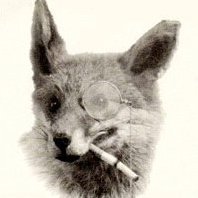
.thumb.jpg.0bac681e0da8e4ed7557610e98fda908.jpg)
